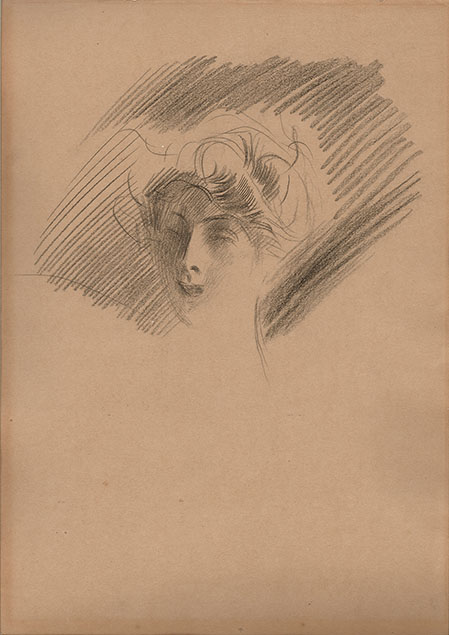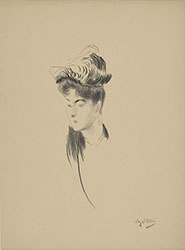(Ferrara 1842 - Paris 1931)
MME. LETELLIER, 1910s
Black chalk, 330 x 230 mm.
PROVENANCE:
Emilia Cardona Boldini, Pistoia; her inscription on the verso.
LITERATURE:
R. Attanasio, E. Cardona, 100 Boldini, Rome 1952, no. 41.
Bianca Doria, I disegni di Giovanni Boldini. Catalogo generale, Bologna, 2011; no. 2344.
According to Doria, the drawing can be dated to the first decade of the twentieth century.
The son of a modest painter, Giovanni Boldini enrolled in the Accademia in Florence in 1862. In Florence he came in contact with the Macchiaioli, principally with Signorini, Michele Gordigiani and Cristiano Banti. From the earliest years of his career, Boldini displayed a remarkable talent as a portrait painter, and during a trip to London in 1869 he was able to obtain numerous commissions. In 1872 he settled in Paris, taking a studio on the Place Pigalle. Beginning in 1874 Boldini exhibited frequently at the annual Salons and quickly rose to prominence in Parisian art circles. He began to paint society portraits and soon developed a reputation for his dazzling, elegant depictions of the fashionable society women, executed with bold, fluid brushstrokes. Boldini befriended other society portrait painters, such as Paul-César Helleu, John Singer Sargent and James A. McNeill Whistler, and was also friendly with two of the greatest draughtsmen of the day, Adolph von Menzel and Edgar Degas. By the turn of the century Boldini had become the most sought-after portrait painter in Belle Epoque Paris.

